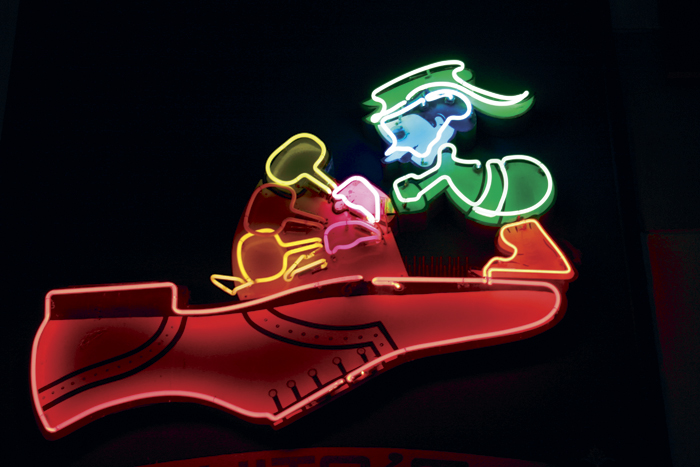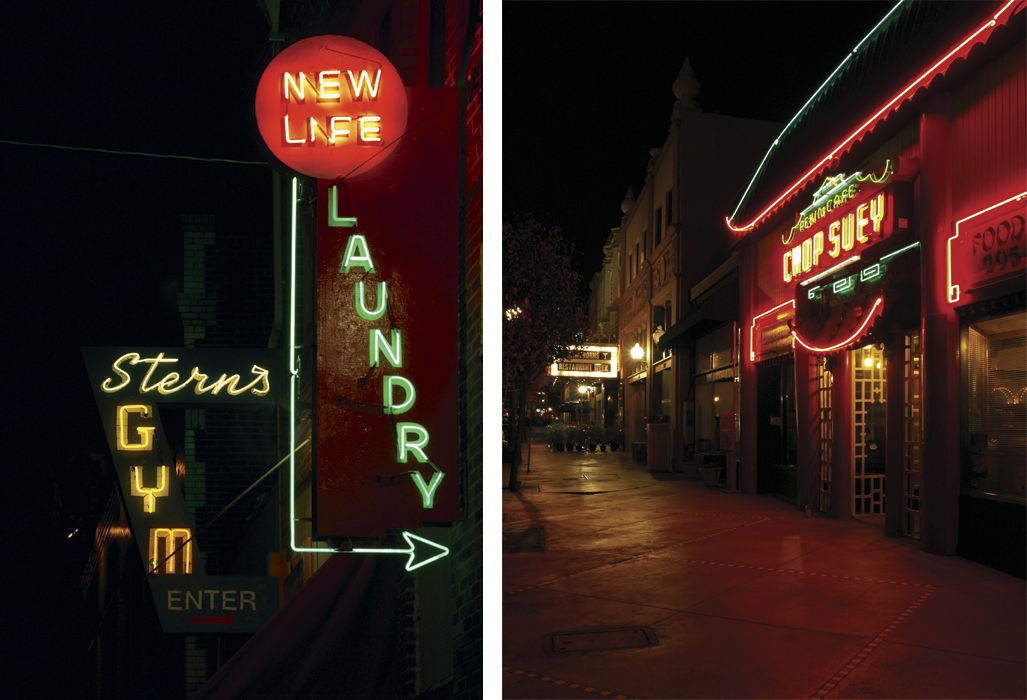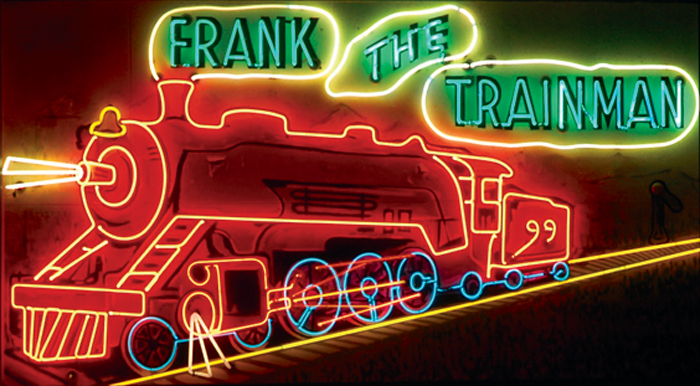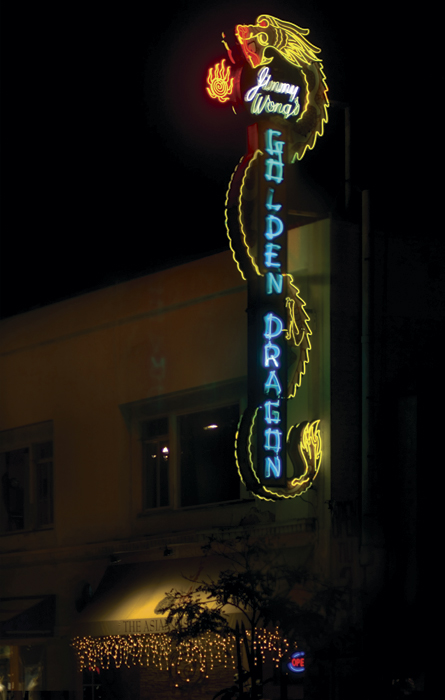|
North Park's Neon
By George Franck
Neon is derived from the Greek word "neos," meaning "new gas." Neon light can be documented back to 1675, when French astronomer Jean Picard noted that mercury in a sealed barometric tube emitted a faint glow. Another Frenchman, George Claude, created the first neon light in 1855 by applying an electrical charge to neon gas enclosed in a Geissler tube.
The first neon lamp became available in 1902, but neon tubes were quite fragile and therefore difficult to ship. Local production of neon signs exploded when the patent for neon lighting expired in 1932.
While North Park's commercial districts began developing with the arrival of the Streetcar in 1907, downtown North Park experienced it greatest growth in the late 1930s and the decade following the Second World War. The popularity of neon signage peaked during this same period. Today North Park retains a handful of interesting neon signs, but it is uncertain how many neon signs along old US Highway 80, in North Park's commercial core and in its neighborhoods have been lost. During this same pre- and post War growth period, similar neon signage was being included in suburban San Diego town centers and along the region's highways.

Wink's Shoe Repair (1949). Photo by Ashi Fachler

Left Stern's Gym (1948) and New Life Laundry (1961) side by side on Granada Street. Right Pekin Café (1935). Photos by Sandé Lollis

Frank the Trainman's animated sign, when lit up it appears to have smoke coming from the stack and steam from the cylinders as the drive rods and wheels roll. Photo by Sandé Lollis
|

Jimmy Wong's Golden Dragon restaurant (1955) in nearby Hillcrest is a San Diego icon. Photo by Dan Soderberg
|
Increasing automobile use after World War II encouraged the development of a suburban commercial corridor along El Cajon Boulevard, with off-street parking lots and neon signage. The streamline Rudford's Restaurant storefront is topped with its name in neon script. Farther west at the up-scale Imig Hotel, now the Lafayette, the location of the Red Fox Room Restaurant is advertised in capital neon letters. Located just to the west of North Park, is Frank the Trainman's neon locomotive, although Frank's store was redeveloped, this wonderful historic sign remains.
In the early years neon signs stopped traffic as people stared in fascination and it wasn't long before neon was everywhere. Theater marquee, night club and restaurant signs became an integral part of the streamlined American landscape."
- Joan Bramsch
During the 1950s, bowling alleys appeared in nearly every suburb in America. North Park was no exception, with the Aztec Bowl and its parking lot located on 30th Street just north of the Boulevard. A tall neon sign, with a separate, backlighted Aztec face element was located over the building. When the Bowling Alley was redeveloped for housing, the sign was relocated to the edge of the project and remains visible from 30th Street just north of the Boulevard.
Although located slightly outside of North Park, no list of El Cajon Boulevard neon signs would be complete without noting Frank the Trainman's neon locomotive at Park Boulevard. Although Frank's store has been redeveloped, his wonderful sign was moved to the replacement office building. And, of course, a towering neon majorette used to mark the College Drive-In Theater on the Boulevard to the east of North Park. SOHO now owns this landmark sign, which was relocated to the College Grove Shopping Center when the drive-in was redeveloped.
And back on University Avenue, the Palisades Gardens Roller Rink at Utah Street was demolished in the mid-1980s. Although its large neon word signs are lost, a recent remodel of the replacement building now has cursive neon lettering that again declares: Palisades Gardens, but at a much smaller size.
The North Park Community Association History Committee published a book on North Park last year and is transitioning into an independent Historical Society for the community. The Society is working with several groups to develop historical neighborhood walking tours; the tour of the commercial district was the genesis of this article. As with the first book, the long-range objective of the Society is to document the history of North Park, perhaps with a second book on the community's mid-twentieth century events and architecture. Neon is a part of that history.
A retired SANDAG planner, George Franck (AICP) volunteers with the North Park History Committee and is a member of SOHO's Modernism Committee.
|
MORE FROM THIS ISSUE
From the Editor
The Balboa Theatre - Anatomy of a Restoration
The Balboa Theatre - An 18-year redevelopment battle
Survivors of San Diego's Theatrical Past
Professional Theater Comes to San Diego
Googie: An Architectural Link to San Diego's Midcentury Culture
North Park's Neon
A General Plan of Destruction
Unearthing Long-Buried Whaley House Cistern
Preservation Community
Reflections
Lost San Diego
Strength in Numbers
Donations 2007-2008
Advertisements
DOWNLOAD full magazine as pdf (16mb)
|







